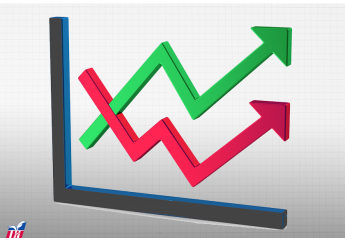Livestock Analysis | June 9, 2021

Price action: Hog futures ended mixed, with the July contract falling 30 cents to $121.50 per hundredweight but June climbing to a seven-year high for the nearby price.
Fundamental analysis: Strong cash markets continued to underpin futures in a somewhat sideways trading day following the contract highs reached earlier this week. The CME lean hog index rose $1.26 to $117.77. The national direct cash carcass price this morning averaged $110.01 and ranged from $100.47 to $125, according to USDA. While the average was down from $112.34 yesterday, it still exceeds the five-day rolling average of $106.29. On wholesale pork markets, prices continued to creep toward all-time highs set in July 2014, with the primal cutout average this morning reported at $135.06, up 12 cents from yesterday and up 26% since the end of April.
The outlook for a seasonal increase in hog supplies later this summer may limit price upside. Based on today’s futures closes, lean hogs are seen trading about 27% cheaper by the end of the year, compared with nearby prices. But futures’ downside may be limited to corrective selling until trade is convinced a seasonal top is at hand.
Technical analysis: June lean hogs touched $121.975, the highest intraday price for a nearby contract since futures soared near $134 in July 2014. Based on nearby futures, hogs are up 73% this year. July futures today fell short of the contract high of $123.60 reached June 7 then matched yesterday, a potential sign of exhaustion or shift into consolidation trade. But the sharp rally from recent months appears intact. Downside levels to watch in the July contract include last week’s low of $117.20 and the late-May lows around $115.78.
What to do: Get current with feed advice. Be prepared to extend corn coverage on a drop to the $6.30 area in July futures and $5.30 in December futures. Be prepared to add to third quarter hog hedges and establish fourth-quarter coverage.
Hedgers: You should have 25% of third-quarter production hedged in July hog futures at $95.375.
Feed needs: You should have all soybean meal needs covered in the cash market through July, along with 50% for August and 25% for September. You have all corn-for-feed needs covered in the cash market through June, along with 25% of third-quarter needs.
Price action: August live cattle ended Wednesday up $0.45 at $118.275, while the expiring June contract added $0.675 before settling at $117.40. Meanwhile, August feeders fell $0.975 to $148.275 and September lost $1.20 to $150.75 in response to the fresh surge in corn futures.
Fundamental analysis: The cattle market continues garnering support from the wholesale market, where choice beef cutout rose 88 cents to $339.49 per hundredweight at noon. Select cutout climbed $1.82 to $308.00. Current beef quotes lag only last year’s COVID-driven spike as the highest wholesale prices on record, again reflecting robust consumer demand. After a few fed cattle traded around $119-$121 Tuesday, there was apparently little follow-up activity today, but the early-week trade may indicate packers will be more aggressive buyers later in the week. Concerns about summer market weakness are likely to remain an obstacle to sustained strength. Feeder demand is likely to continue suffering until cattlemen see moderating feed costs.
Technical analysis: August cattle are trading near the center of the recent range, with bears seeming to have a modest advantage, as best indicated by the contract’s late inability to challenge 40-day moving average resistance around $118.87. Major resistance likely extends from the May 25 high of $121.225 to $121,62. Solid support presumably persists at the May 22 low of $115.925, with pivotal support having emerged at the June 1 low of $114.625
What to do: Get current with feed advice. Be prepared to extend corn coverage on a drop to the $6.30 area in July futures and $5.30 in December futures.
Hedgers: Carry all risk in the cash market for now.
Feed needs: You should have all soybean meal needs covered in the cash market through July, along with 50% for August and 25% for September. You have all corn-for-feed needs covered in the cash market through June, along with 25% of third-quarter needs.






